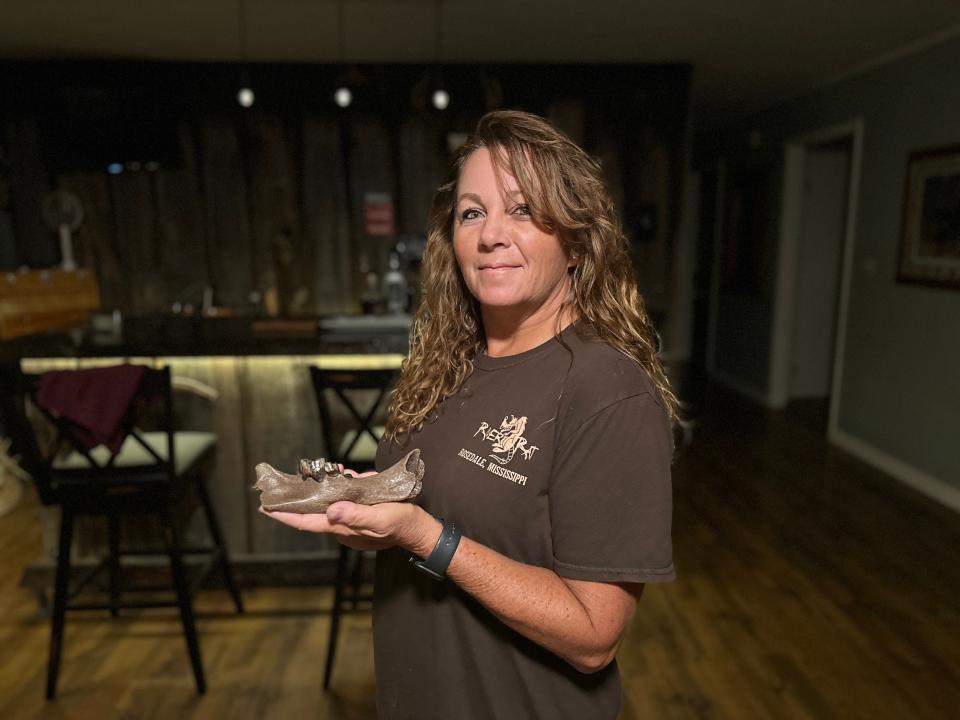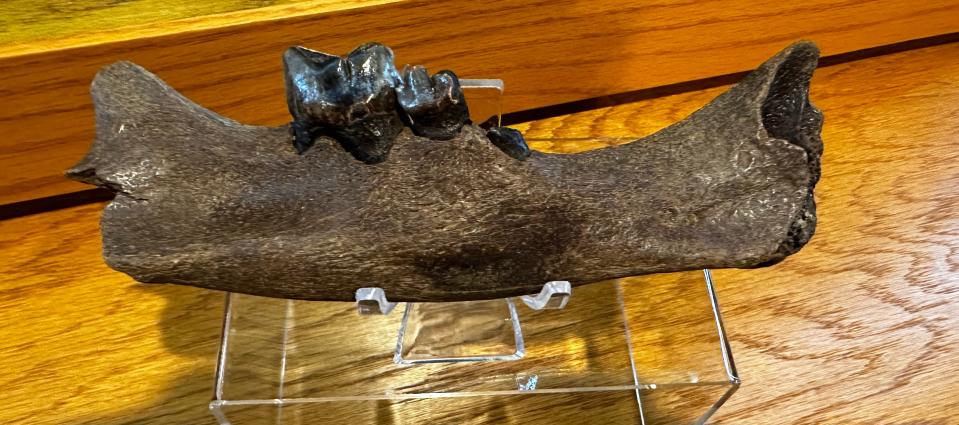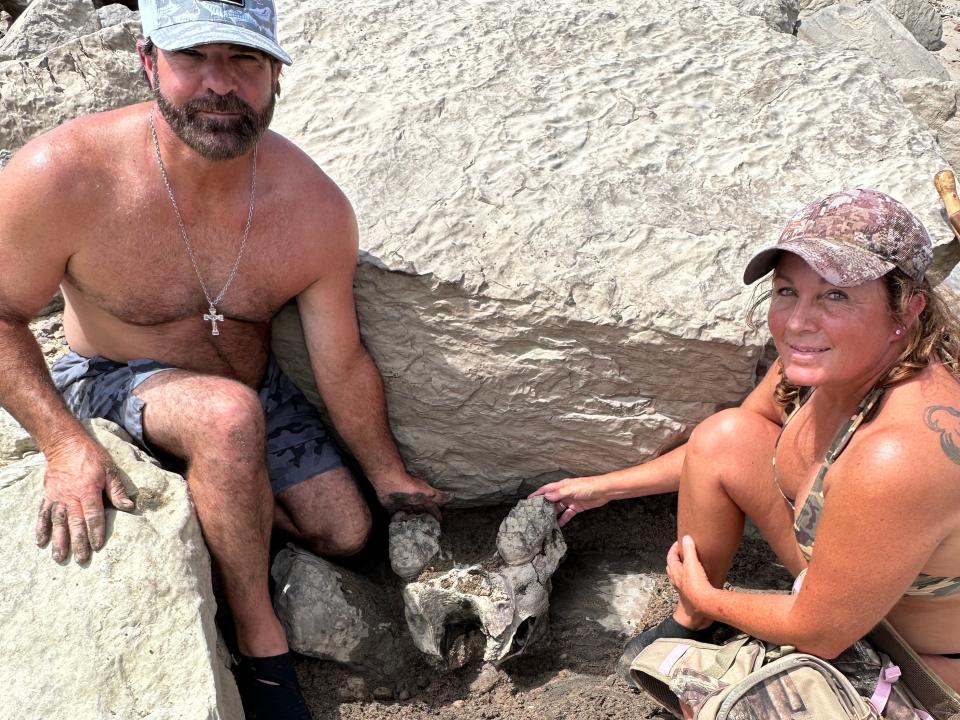[ad_1]
When is Mississippi Delta The couple went out to spend some time. Mississippi River Lately, they've been expecting to find fossils of long-extinct animals. After all, they find them all the time.
However, what they did not expect to find was a fossilized jawbone from a giant animal. Ice Age cat.
Rosedale native Sherry Coy grew up with a father who collected fossils along the river, and she's been following in his footsteps since she was a child.
“I’ve been doing this since I could walk with my dad,” Coy said. “What you find is incredible.”
In recent years, she has shared her passion for fossil hunting with her fiancé, Joe Jo Aguzzi of Cleveland, Mississippi.
“We’ve been hunting for fossils hard the past two summers, especially when the river level has been low,” Aguzi said. “We’ve found mammoth teeth, mastodon teeth, we have tusks. I found a musk ox skull, which is very rare.”


Mississippi Fossil Hunter Discovers Rare Cat Jaw With Sharp Fangs
Last month, Koi and Aguzi were on the river doing what they love to do, and Koi came across something very unexpected.
“It was half buried, barely sticking out, I thought it was just a bone,” Coy said.
When he picked it up, Aguzi immediately knew what it was, or at least he thought he knew.
“When she found it, she knew it was a cat,” Aguzi said. “I told her she had found a cougar.”
The discovery was unusual. American lions became extinct about 11,000 years ago, and their existence was first documented by a jawbone found near Natchez in the 1830s. Since then, only a handful of lion jawbones have been found in Mississippi.
However, paleontologist George Phillips of the Mississippi Museum of Natural Sciences was able to identify the jaw as that of a sharp-toothed cat.
That makes the find extremely rare in Mississippi. Only about a dozen fossilized saber-toothed cats have been found in Mississippi, Phillips said, and Coy's discovery was the first jaw documented in the state.
“It was unbelievable, honestly,” Coy said. “To actually have a sharp tooth, it was unbelievable to us.”


more: Mississippi Man Finds Bone of Ice Age Saber-Toothed Tiger
Ice Age Specialized Killer
Sharp-toothed cats were a symbol of the last Ice Age and were highly advanced at killing prey. They were powerful, with strong jaws, necks and shoulder muscles, Phillips said.
There were fangs. Phillips said they were about the size of a banana and about 10 1/2 inches long overall. About five inches of them extended past the gum line.
“It's a dagger,” Phillips said.
These daggers, combined with powerful muscles, combined to make a specialized hunter. The theory is that the large teeth were used to inflict a single, fatal bite into the soft tissue of some large herbivore at the time, Phillips said. The cat would then wait for the animal to die rather than risk damaging one of its teeth with multiple bites and a struggle.
The cats were also very large, rivaling the size of the largest known cats while dwarfing others.


“It was huge.” Mississippi Man Finds Rare Mammoth Tusk, First of Its Kind in State
How big are saber-toothed cats compared to others?
The saber-toothed cats were massive, predatory animals. They have been estimated to weigh up to 620 pounds. But how did they compare to other big cats?
Finding the remains of such a giant predator is the highlight of the couple's fossil hunt, despite everything they've found.
“The sharp-toothed jaw outshines them all,” Aguzi said.
Have a story idea? Contact Brian Broom at 601-961-7225 or bbroom@gannett.com.
This article originally appeared on the Mississippi Clarion Ledger: Rare Sharp-Toothed Cat Jaw Fossil Found in Mississippi
[ad_2]
Source